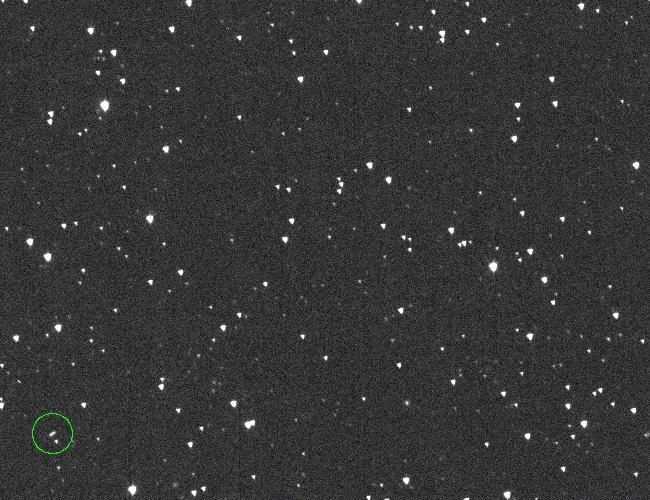This artist’s impression shows the planet K2-18b, it’s host star and an accompanying planet in this … [+]
ESA/Hubble, M. Kornmesser
Scientists have used the Webb Space Telescope to detect a molecule in the atmosphere of a distant planet that could potentially be a sign of life.
During two observations, researchers found evidence for dimethyl sulfide (DMS) in the atmosphere of K2-18 b, a large “sub-Neptune” planet located about 120 light-years away from our solar system in the Leo constellation.
On Earth, DMS is mainly produced by phytoplankton. However, the detection of DMS in the planet’s atmosphere is still preliminary and requires further validation, according to the authors of a forthcoming paper in The Astrophysical Journal Letters.
Preliminary Findings
“Future observations using the Webb telescope should be able to confirm if DMS is indeed present in significant levels in the atmosphere of K2-18 b,” said Nikku Madhusudhan, an astronomer at the University of Cambridge and the lead author of the paper.
The researchers analyzed the light from K2-18 b’s host star as it passed through the planet’s atmosphere. The Webb telescope’s infrared capabilities and sensitivity were crucial in this discovery.
The ultimate goal of this research is to identify signs of life on potentially habitable exoplanets.
Exciting Exoplanet
K2-18 b has previously made headlines for several reasons. This exoplanet, which is 8.6 times the mass of Earth, orbits a cool red dwarf star called K2-18 and was discovered by NASA’s Kepler Space Telescope in 2015. Here’s why it’s considered exciting:
- It is located within the star’s habitable zone, where liquid water could potentially exist on the surface of a rocky planet.
- In 2019, the Hubble Space Telescope detected evidence of water vapor in its atmosphere.
- The new research also revealed the presence of carbon-bearing molecules, including methane and carbon dioxide.
- The abundance of methane and carbon dioxide, along with the absence of ammonia, suggests the possibility of an ocean beneath a hydrogen-rich atmosphere, creating a so-called “Hycean” exoplanet.
Spectra of K2-18 b, obtained with Webb’s NIRISS (Near-Infrared Imager and Slitless Spectrograph) and … [+]
Illustration: NASA, CSA, ESA, R. Crawford (STScI), J. Olmsted (STScI), Science: N. Madhusudhan (Cambridge University)
Diverse Environments
However, the mass of K2-18 b means that its surface gravity would be significantly higher than Earth’s, and its host star, K2-18, is known to be extremely active. This implies that the surface of K2-18 b is frequently exposed to high-energy radiation, creating a hostile environment for life. It is also likely that the planet’s interior contains a large mantle of high-pressure ice, similar to Neptune, and any potential ocean would be too hot to sustain life.
“Our findings highlight the importance of considering diverse habitable environments in the search for life elsewhere,” said Madhusudhan. “While the search for life on exoplanets has traditionally focused on smaller rocky planets, the larger Hycean worlds offer more favorable conditions for atmospheric observations.”
What Happens Next
While sub-Neptunes do not exist in our solar system, they are believed to be the most common type of planet in the Milky Way.
Further observations of K2-18 b are planned with Webb’s Mid-Infrared Instrument. Savvas Constantinou, a member of the research team from the University of Cambridge, stated, “This means our current work is only a preliminary demonstration of what Webb will be able to observe on habitable-zone exoplanets.”
Wishing you clear skies and wide eyes.














